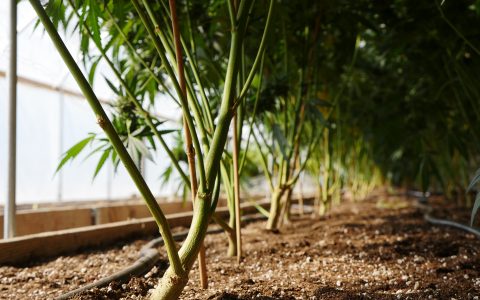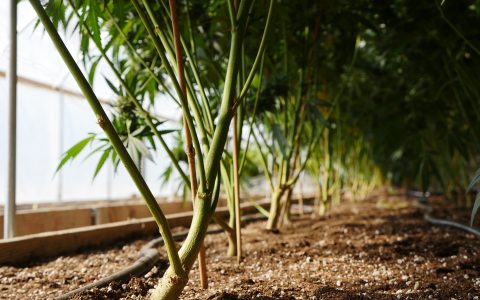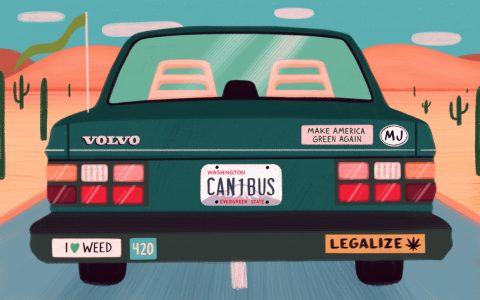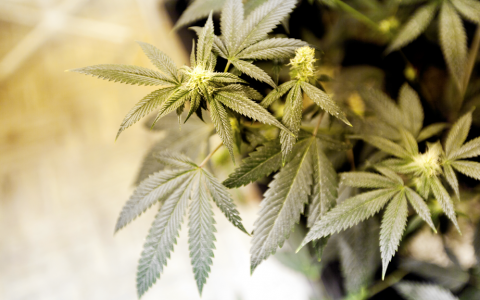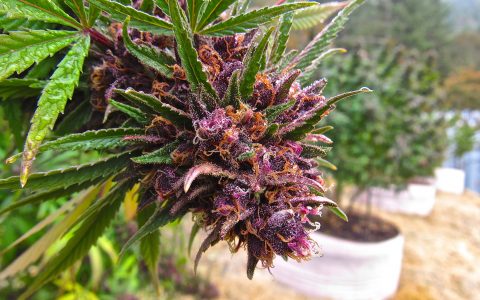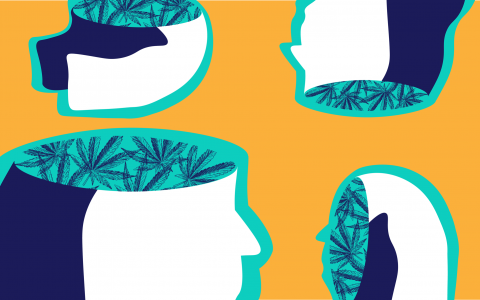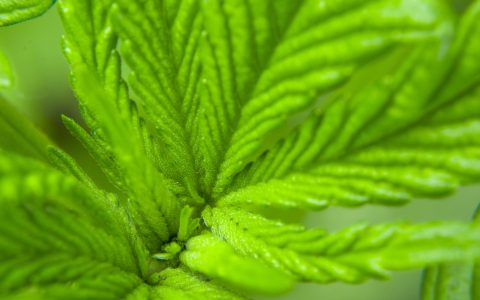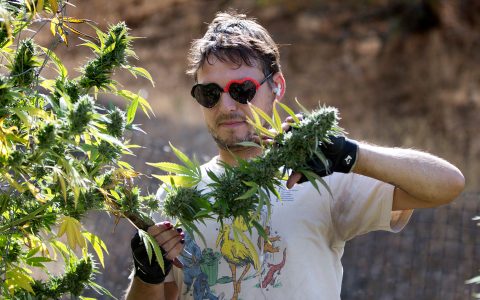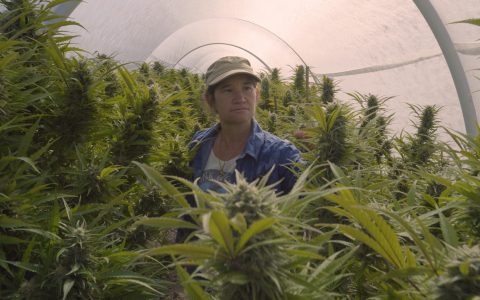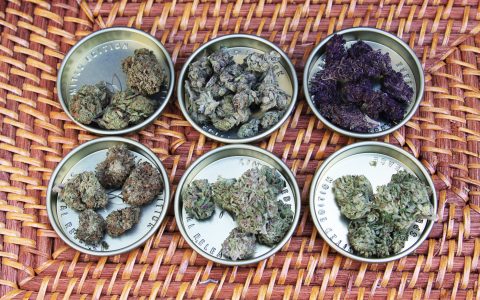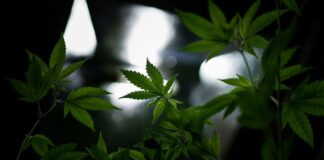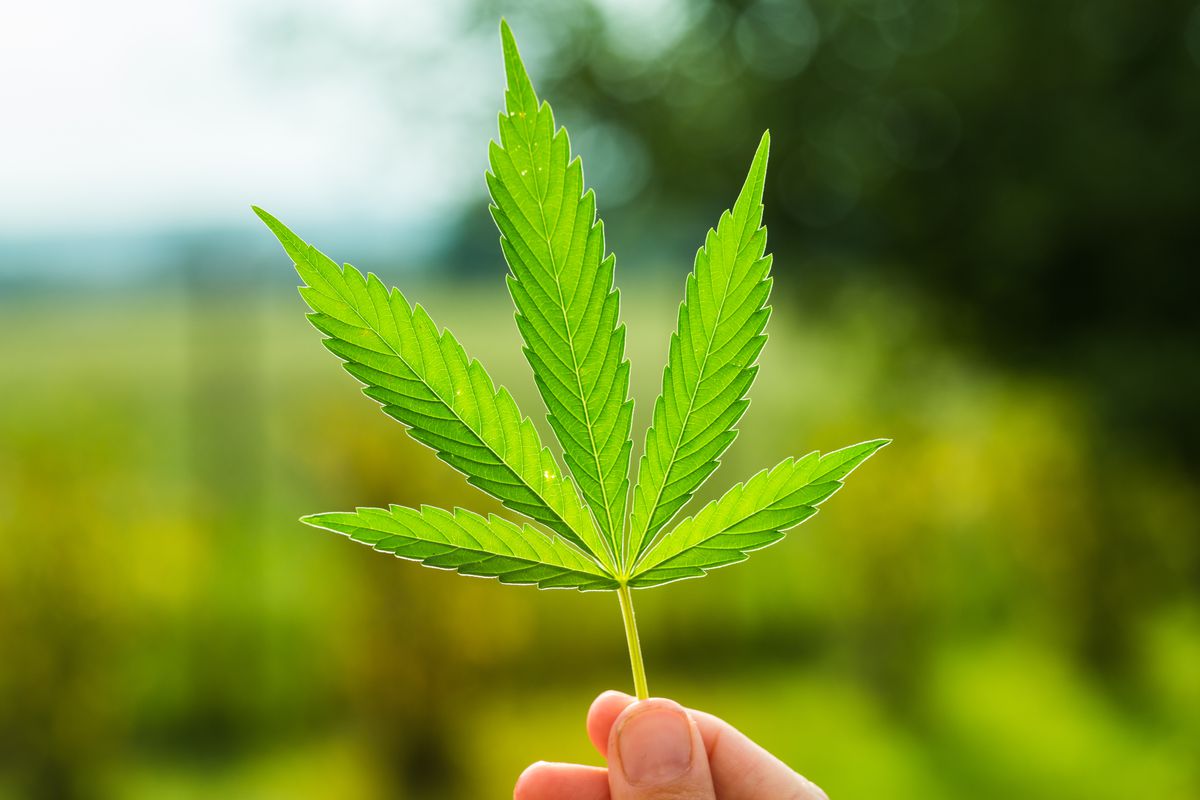Over 7,500 different varieties of apples currently exist on the planet, but less than 100 of those varieties are commercially available in the United States, and just five varieties—Gala, Honeycrisp, Fuji, Granny Smith, and Red Delicious—account for more than 75% of the overall apple market by volume.
So will cannabis go the same way—until there’s nothing left to smoke but Blue Dream, OG Kush, Sour Diesel, Jack Herer, and Tangie?
The best way to preserve Northern California’s unique cannabis diversity is to buy it up, roll it up, and smoke it.
Not if the heirloom cannabis farmers of the Emerald Triangle have anything to say about it.
Consisting of Mendocino, Humboldt, and Trinity Counties in Northern California, the famed Emerald Triangle has been America’s premiere cannabis cultivation region since the late 1960s, when displaced hippies and disillusioned seekers started showing up en masse as part of a grassroots back-to-the-land movement that espoused the virtues of finding cheap, remote land and learning to live off it.
Typically, that meant growing your own food, with a side plot of cannabis big enough to supply a communal head stash, plus just enough left over to help make ends meet. Which sounds like a pretty chill way to live.
But over the next 50 years, the federal government would wage all-out war against those peaceful small farmers, sending attack helicopters and tactical assault squads to find and eliminate them. And yet, despite the best efforts of the Drug Enforcement Administration and the Department of Justice, the cannabis harvest in Northern California sharply improved over that span in terms of quality, quantity, and genetic diversity.
So it’s a pretty bitter irony to travel through the heart of the Emerald Triangle right now, at the dawn of a new era when the plant can be grown completely legally, only to discover that the second- and third-generation small farmers descended from (spiritually, if not by blood) those original back-to-the-landers are struggling to survive, as they fight for their place in California’s new regulatory system.
And no, the irony that the same government that once targeted them for SWAT raids now sends tax collectors and compliance officers is definitely not lost to them.
But here’s a sweet irony to go along with that bitter one: The best way to preserve Northern California’s unique cannabis diversity is to buy it up, roll it up, and smoke it.
Because the only thing that can save the Emerald Triangle’s rich cultivation tradition from government bureaucracy and big business’ market leverage is convincing consumers that—just as with craft beer, craft wine, and craft spirits—it’s worth spending a little more for something that’s objectively better, and that also supports an authentic, sustainable approach to production.
Which is just a fancy way of saying: Smoke the weed you want to see in the world.
So I set out to do just that, plotting a road trip from San Francisco to Arcata, California, with stops all along the way to shop at dispensaries focused on sungrown, heirloom, artisanal-scale cannabis.
Road Trip Essentials
Visiting the Emerald Triangle and sampling its finest flowers is a pot pilgrimage every true cannabis enthusiast must make at least once during their time on Earth.
Beyond mere cannabis, check out Leafly’s Cannabis Traveler’s Guide to Finding the Real Humboldt County for tips on where to go, what to eat, where to stay, and how to get the most out of an incredible region that’s known for rugged ocean beaches, old growth redwood forests, and diverse agriculture.
California Cannabis Legalization and Laws
Roughly 450 licensed stores and delivery services are open to adults age 21 and older, who are and carry a valid form of identification. You can carry up to 1 ounce of flower and 8 grams of hash. No smoking and driving. Keep it all in the trunk.
Road Tripping from San Francisco
The shortest drive from San Francisco to Arcata takes about five hours (plus traffic), but keep in mind, beelining it straight up Highway 101 means missing a lot of incredible stops along the way—like Shelter Cove, the Lost Coast, and a whole string of picturesque small towns.
Bring Resealable Jars
Pack a large Tupperware to safely store all of the incredibly terpy cannabis flowers and concentrates you’re going to want to pick up along the way. You might even want to bring a small cooler to keep top-shelf hash cool during your hot summer adventure.
Stop #1: SolFul in Sebastopol, California
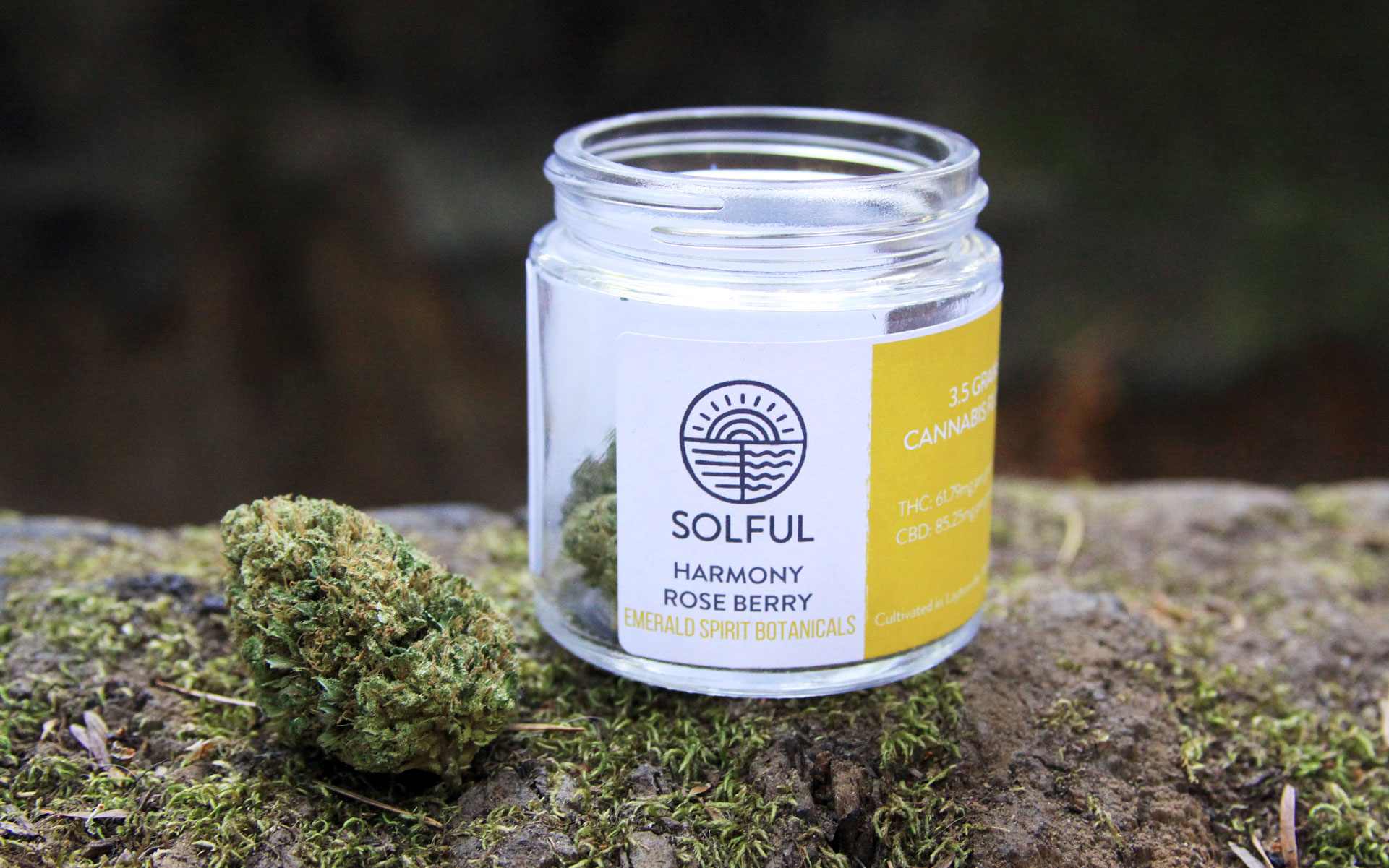 Watch out, wine country—cannabis culture catches up at SolFul. (Elise McDonough for Leafly)
Watch out, wine country—cannabis culture catches up at SolFul. (Elise McDonough for Leafly)
Setting out from San Francisco, I decided to kick off my road trip 90 minutes north in Sonoma County—which has a way bigger reputation for wine than for weed—before heading north into the Emerald Triangle proper.
I made this slight detour from the fastest possible route to visit a cannabis dispensary in the funky little town of Sebastopol, California, that opened in 2017, but has already earned a stellar reputation for working directly with small, sustainable, sungrown family farms.
SolFul is a brightly lit and sparsely designed retail environment with a minimalist look that belies its hippie sensibilities. Eli Melrod, CEO of SolFul and their head of flower sourcing, first broke into the industry when he landed a job with one of the earliest cannabis testing labs to service Northern California.
“I was driving all over the backcountry, down winding unpaved roads, to meet with cannabis farmers and breeders,” Melrod explains as we peruse Solful’s menu. “That’s when I fell in love with the Emerald Triangle. I also realized that these small, sustainable, organic farmers produce the best possible medical cannabis, the stuff I’d give to my own grandmother.”
Some of SolFul’s cannabis is certified biodynamic, which goes far beyond organic. Some of the farms they work with have been recognized for employing regenerative farming practices, which improve the soil and environment each year, rather than depleting it as happens with industrial farming.
Most importantly, however, they’ve got the goods.
After an extensive consultation with Melrod and his knowledgeable staff, I picked out some truly stellar cannabis:
Blue Kush is an heirloom strain that hails from Covelo, California, a small community in Mendocino County where rare varietals are shared and crossed by local growers. Blue Kush is a hybrid of a classic OG Kush and a Blueberry phenotype that had been kept going on the farm for years because of its spicy nose and alert, cerebral effects.
- Harmony Rose Berry from Emerald Spirits Botanicals
Bred by Katie Jean of Emerald Spirit Botanicals, Harmony Rose Berry is an heirloom varietal originating from deep in the hills of Mendocino County. The strain has a balanced profile of THC and CBD, and an incredible floral nose.
Stop #2: High Tide in Gualala, California
From Sebastopol I headed west, to link up with California’s legendary Highway 1 and follow it up the coastline and into Mendocino County. In about two hours I reached High Tides Cannabis Dispensary, a small shop right off the highway that’s dedicated to supplying cannabis grown and processed within a 60-mile radius. Prior to this year’s regulations taking effect, that typically meant buying direct from nearby farmers, who they know well as part of a tight-knit local community.
At the moment, however, all of High Tides’ flowers—an impressive menu that includes many heirloom varieties—come in from Flow Kana, which packages under their own brand, with the individual farm identified right on the label. I selected a jar of Ringo’s Gift, named for legendary Southern Humboldt Seed Collective breeder Ringo Lawrence, who created Sour Tsunami, the first stabilized CBD-rich cannabis strain in California.
Ringo’s Gift is a hybrid cross of Harle-Tsu and ACDC. The phenotype I selected has a roughly 1 to 2 ratio of THC to CBD. The flavor profile blends citrus notes with classic earthy undertones.
Another hour of driving up a stunning stretch of Highway 1 brings me to the town of Mendocino, which combines the charm of an artsy fishing village with a ruggedly beautiful stretch of coast and a lively local cannabis scene.
At Leonard Moore Collective, I find a long-running, award-winning operation that started as a medical cannabis collective but is now open for recreational sales, and even has its own laid-back consumption lounge next door to the dispensary. The closest thing I could find on their menu to a locally grown heirloom varietal was a pack of prerolls from Henry’s Originals that says they’re “Farm-direct from Mendocino County.”
They’ve since stocked up on Humboldt Farms, Barrett Farms, and Redwood Remedies.
Since I was planning to have lunch at the highly recommend Goodlife Cafe and Bakery, just a short walk from the consumption lounge, and then spend a few additional hours wandering around town, I decided to light up one of the Spyrock OG prerolls inside Leonard Moore’s consumption lounge.
Named for a remote mountain area where the Eel River meets the Northwestern Pacific Railroad, the strain is a spicy heirloom OG varietal perfected by local growers. I quickly make a few new friends in the lounge.
After about 45 minutes of following a twisting and turning backcountry road from the coast to Highway 101, I headed due north, straight into Richardson Grove, a stretch of old growth redwoods that surrounds the highway, and serves as the true gateway to Humboldt County. From there it’s a straight shot to Arcata, California, a hippie-flavored college town that’s also a center of local cannabis culture.
I started by asking everyone I met about Trainwreck, a classic strain with its roots right in Arcata. But after stopping at a few dispensaries, I keep hearing that either the genetics have been lost or they’re “sold out.” Eventually, a friendly local with a massive red beard gifted me a few nugs from his recent harvest as a personal gift, but it was still too fresh to smoke.
That smell, though—pure Trainwreck.
He also recommended checking out a shop called The Heart of Humboldt, that after operating for a few years as a little hole-in-the-wall, has just moved into a new modern retail facility.
“The most important thing for me in all of this is that there’s a fair marketplace for small, craft farms and producers of high quality products,” Harry Ballance, a certified cannacist at The Heart of Humboldt, tells me as we load up my shopping cart.
Harry is excited for me to try live resin from Terp Preservation Society, particularly a strain called Mendo Breath, and a solventless live rosin of Zkittlez from Have Hash in collaboration with Talking Trees Farms.
But I’m personally most excited about rolling up some Sour Melon flowers from Willow Creekside Farms. Sour Melon is a hybrid of Monster Mass, Sensi Star, and Big Bud. According to Harry, it’s “a sativa-leaning hybrid with a musty start and strong candy like notes on the back end. Though it leans to the sativa side she still gives you a somewhat relaxing high with the cerebral effects you expect.”
As I write these words, my road trip through the Emerald Triangle is sadly in the past. But that Sour Melon is right at hand, ready to be rolled up.
And who says you can’t take it with you? If you can’t make it this year, you can still source sustainable, small-farm Northern California cannabis by seeking it out from local retailers near you. Ask if they carry product from Flow Kana, Up North, Emerald Family Farms, and other cooperative-like companies that work directly with a variety of Emerald Triangle small farmers to help them bring their crops to market statewide.


